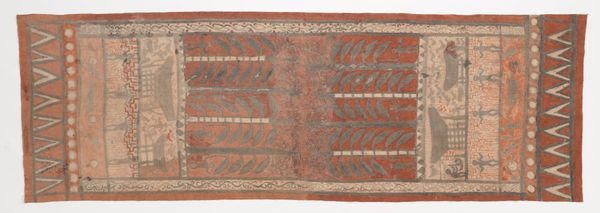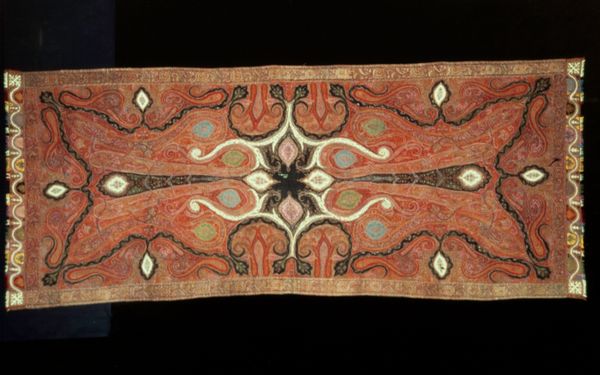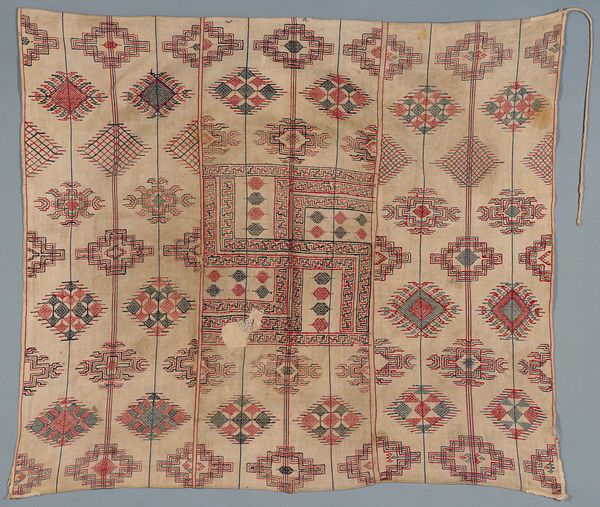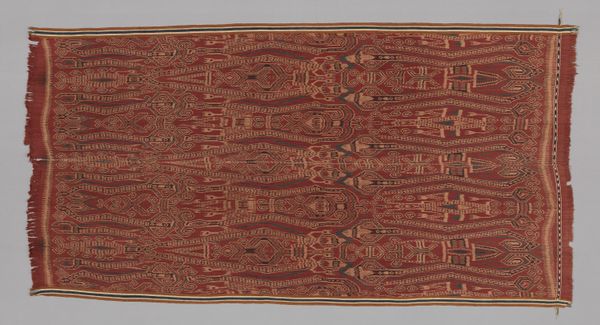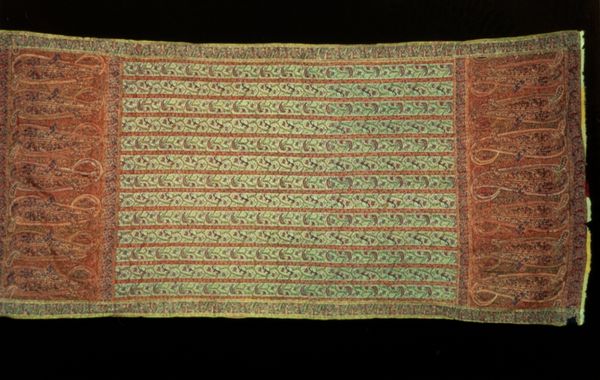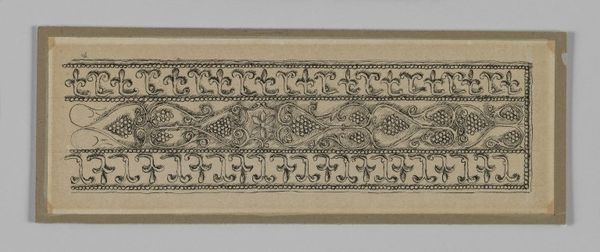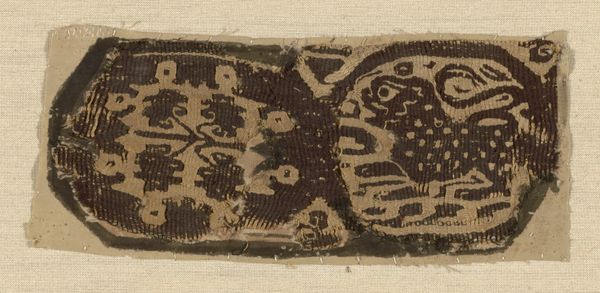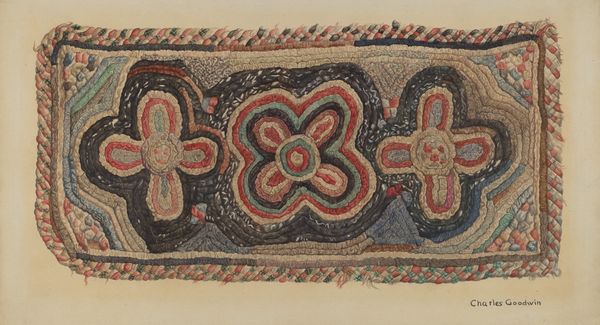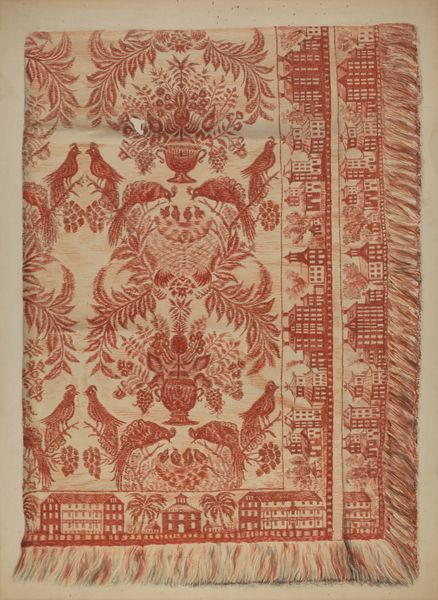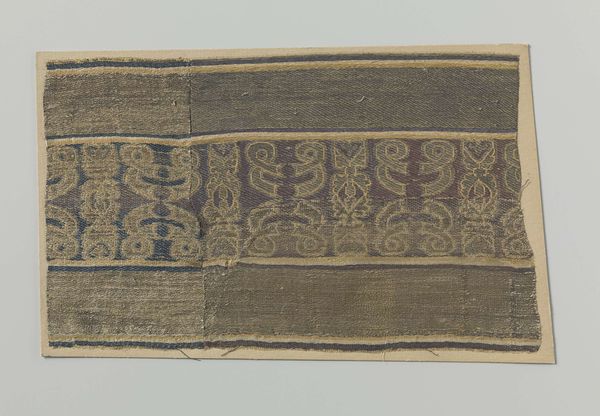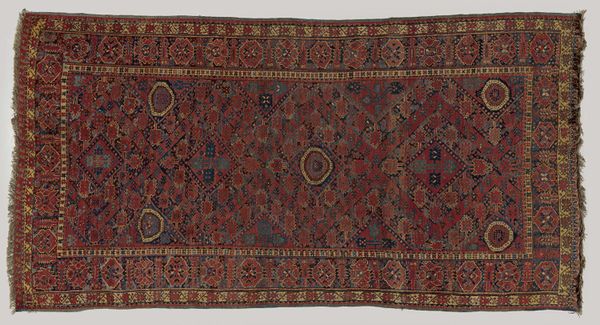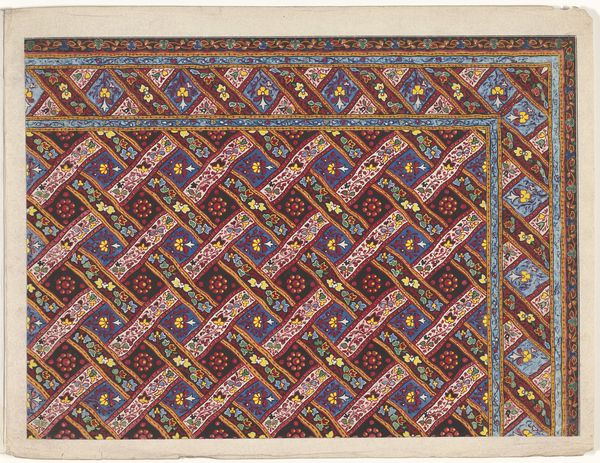
Langwerpige kasjmiersjaal geweven van veelkleurige wol, met een zwarte spiegel, waaromheen een vol patroon met palmetten en bladeren c. 1855 - 1865
0:00
0:00
fibre-art, textile
#
fibre-art
#
textile
Dimensions: length 345 cm, width 164 cm
Copyright: Rijks Museum: Open Domain
Editor: Here we have an elongated cashmere shawl, circa 1855 to 1865, woven from multi-colored wool, and attributed to Gaussen & Cie. The sheer density of the pattern is mesmerizing. What strikes you most about its formal qualities? Curator: The chromatic scale, predominantly muted earth tones with subtle bursts of red and teal, establishes a controlled visual field. Note the deliberate repetition of the paisley motif—a systematic application suggesting an industrialized mode of production, yet simultaneously striving for an effect of handmade uniqueness. The symmetry is formal but avoids absolute rigidity, preventing monotony. Do you perceive this interplay of structure and slight variation as a deliberate aesthetic choice? Editor: I see it! The ever so slight shifts keep my eye moving and engaging. Is there a hierarchy to the design, or is it truly an all-over composition? Curator: The design certainly tends towards a holistic arrangement, characteristic of the "horror vacui" often found in textile arts of this period. Yet, one could argue that the central axis—that meandering curvilinear form—serves as a grounding element, a fulcrum for the surrounding motifs. Observe how the palmettes and leaves, while uniformly distributed, orient themselves around this central figure, contributing to an underlying order. It's not overtly hierarchical, but subtly directional. Editor: That’s fascinating. It seems so chaotic at first glance, but there really is an order within. Curator: Precisely! The visual pleasure arises, in part, from deciphering this equilibrium between chaos and control, this negotiation between rigid structure and organic fluidity. This delicate balance allows the textile to breathe, maintaining visual interest through sustained observation. Editor: I definitely see the beauty in the organization of shapes and colors now. Thanks for highlighting that. Curator: Indeed. Formal analysis refines our vision, enriching our perception of structure that sustains the art.
Comments
No comments
Be the first to comment and join the conversation on the ultimate creative platform.
